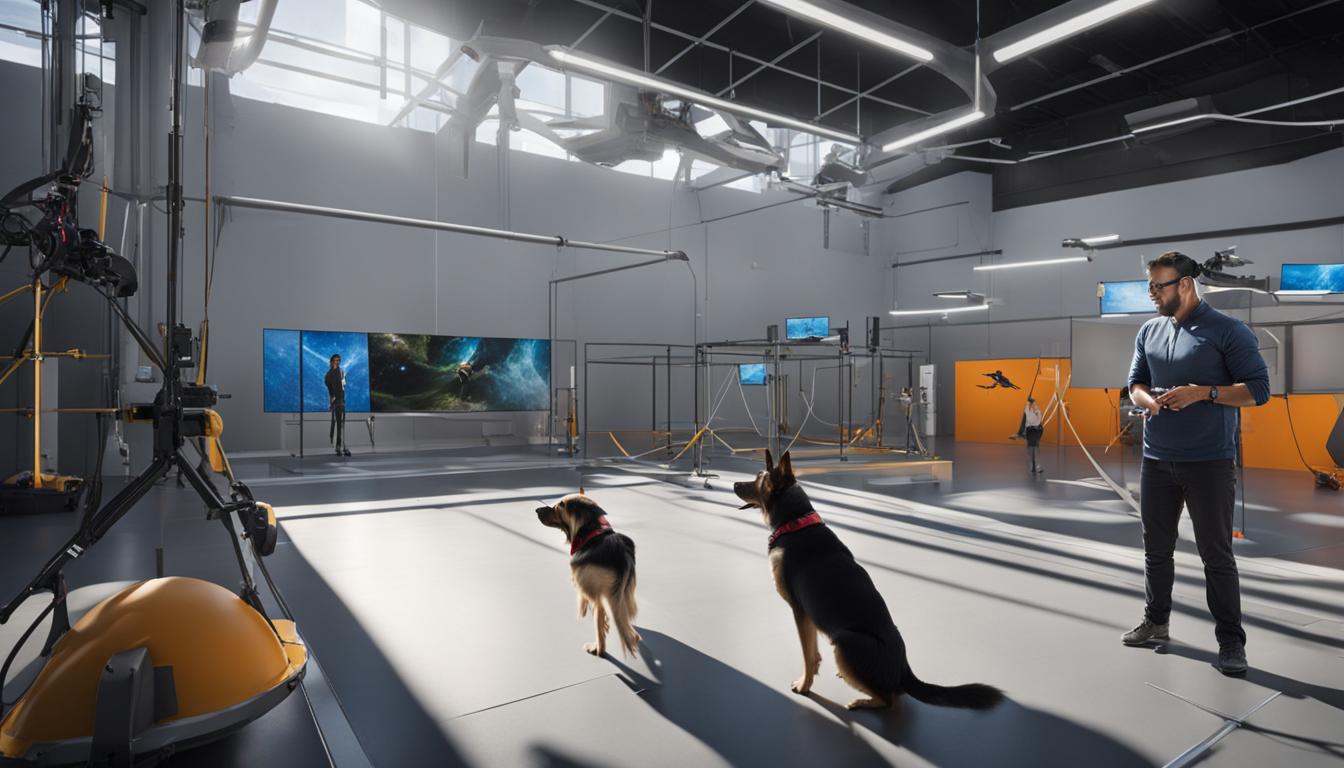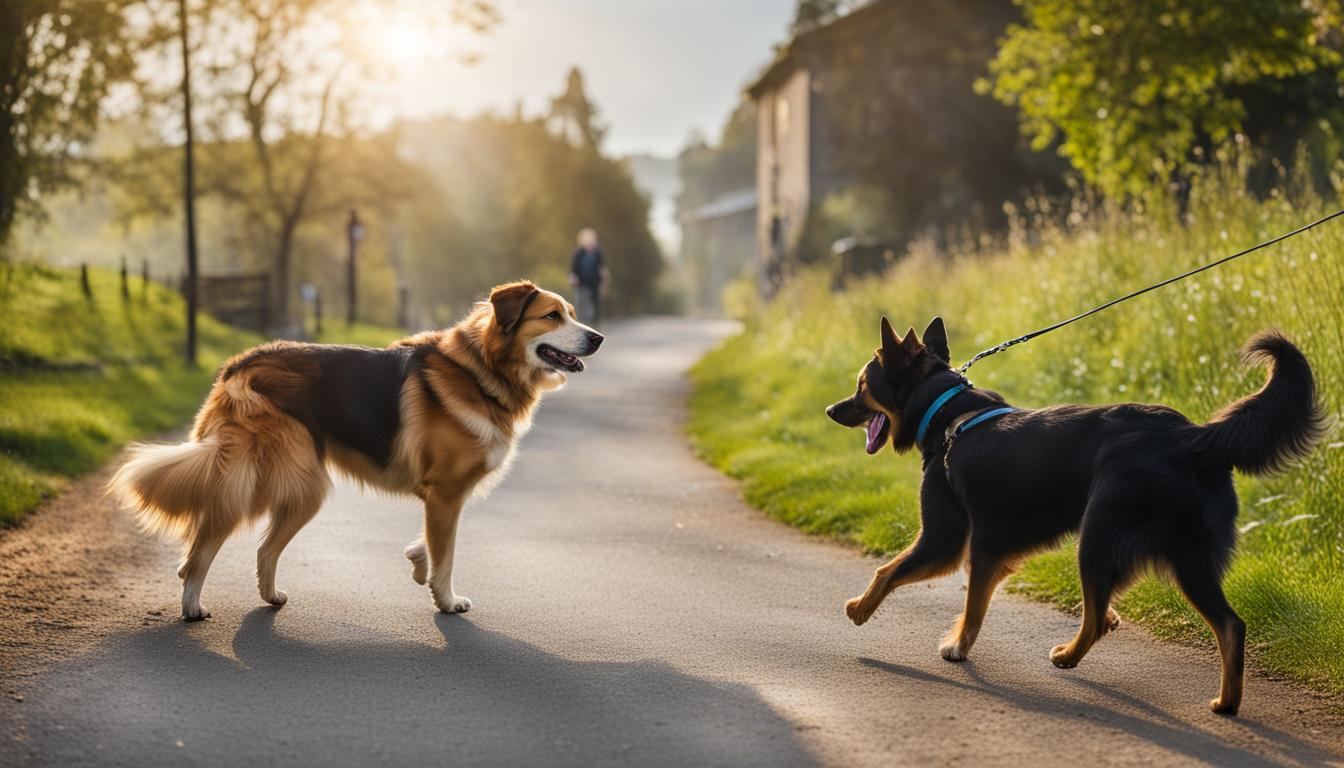Are you looking for an effective and pet-friendly method to train your beloved furry friend? Look no further than clicker training! Clicker training is a positive reinforcement technique that utilizes rewards to encourage desired behaviors in dogs. Not only does it make learning fun for your pooch, but it also strengthens the bond between you and your four-legged companion.
Clicker training provides clear communication and allows dogs to learn new behaviors faster. It taps into their problem-solving skills and promotes creative thinking, making the training process enjoyable and engaging. Whether you want to teach basic commands, address behavioral problems, or even tackle advanced tricks, clicker training is a versatile tool that can be tailored to suit your dog’s individual needs.
Key Takeaways:
- Clicker training is a highly effective and pet-friendly method for training dogs.
- It relies on positive reinforcement and rewards to encourage desired behaviors.
- Clicker training enhances the bond between dogs and their owners.
- It promotes faster learning and develops problem-solving skills.
- Clicker training can be applied to various commands and behaviors.
Implementing Clicker Training Successfully
Implementing clicker training successfully requires proper timing and techniques. By understanding how to use a clicker device and establishing a reward system, you can effectively train your dog using this positive reinforcement method.
First, let’s talk about timing. The clicker device makes a distinctive clicking sound to mark the desired behavior, and the reward should follow immediately after the click. The timing of the click is crucial as it helps your dog associate the click with the correct behavior. Consistency in timing is key to successful clicker training.
Next, it’s important to establish a reward system. Rewards can include treats, praise, or any other positive reinforcement that motivates your dog. The reward should be something that your dog finds highly rewarding and is willing to work for. By consistently providing rewards after the click, you reinforce the desired behavior.
While implementing clicker training, it’s essential to be aware of potential challenges. The most common challenge is incorrect timing. If the click is delayed or given before the desired behavior, it can confuse your dog and hinder the training process. Another challenge is the overuse of treats. While treats are effective rewards, it’s important to gradually reduce their frequency to avoid dependence on treats for desired behaviors. Overtraining and expecting progress too quickly can also be detrimental to the training process. Remember, consistency and patience are key.
Table: Common Challenges in Clicker Training
| Challenge | Explanation |
|---|---|
| Incorrect Timing | Clicking too late or too early, confusing the dog. |
| Excessive Use of Treats | Relying too heavily on treats, leading to treat dependency. |
| Overtraining | Pushing the dog too hard, causing frustration and burnout. |
| Expecting Quick Progress | Having unrealistic expectations, leading to frustration. |
With proper preparation and consistent implementation, clicker training can be a highly effective method for training dogs. It allows for clear communication between you and your dog, making the learning process faster and more enjoyable for both of you. So grab a clicker, some treats, and get started on this exciting journey of training your dog using positive reinforcement!

Enhancing Obedience with Clicker Training
Clicker training can be a powerful tool for enhancing obedience in dogs. It provides a positive and effective way to address behavioral problems and modify unwanted behaviors. Whether your dog barks excessively or jumps on guests, clicker training can help shape their behavior.
By using the clicker to mark the desired behavior and providing rewards, you can clearly communicate with your dog and reinforce the behaviors you want to see more of. This positive reinforcement approach helps dogs learn and understand what is expected of them.
One of the great benefits of clicker training is its versatility. It can be applied to dogs of different breeds, sizes, and ages. Whether you have a playful Golden Retriever or a strong-willed Terrier, clicker training can be tailored to suit their individual needs and behavior issues.
Table: Examples of Behavioral Problems Addressed with Clicker Training
| Behavioral Problem | Clicker Training Approach |
|---|---|
| Excessive Barking | Click and reward for quiet behavior |
| Jumping on Guests | Click and reward for staying calm and keeping all paws on the floor |
| Pulling on the Leash | Click and reward for loose leash walking |
Clicker training is not only effective for addressing basic obedience commands, but it can also be used to teach more complex behaviors and tricks. From sit and stay to spin and roll over, clicker training can help you unlock your dog’s full potential.
Remember, consistency and patience are key when using clicker training. It may take time for your dog to understand the association between the click and the reward, but with practice and positive reinforcement, you can achieve great results.

Clicker Training for Puppies and Rescue Dogs
Clicker training is not only effective for adult dogs but also for puppies and rescue dogs. Puppies have a natural curiosity and eagerness to learn, making them ideal candidates for clicker training. You can use this method to teach them basic obedience commands, socialization skills, and proper behavior. For rescue dogs who may have behavioral challenges, clicker training offers a positive and structured approach to address these issues and help them develop new, desirable behaviors. It builds trust and confidence while creating a strong bond between you and your new furry friend.
Advanced clicker training exercises provide mental stimulation, build problem-solving skills, and strengthen the bond between you and your dog. Remember to be patient, consistent, and always reward desired behaviors. With dedication and practice, you and your dog can achieve impressive results with clicker training.
Conclusion
In conclusion, clicker training is a powerful and rewarding technique for training dogs. It relies on positive reinforcement and clear communication to help dogs learn new behaviors quickly and effectively. By using a clicker device and establishing a reward system, you can successfully implement clicker training with your furry friend.
Clicker training has numerous benefits, including improved obedience and the ability to address behavioral problems. It can be applied to dogs of different breeds, making it a versatile training method. Whether you’re teaching basic commands or advanced tricks, clicker training can help you achieve impressive results.
Advanced clicker training exercises, such as shaping behaviors and using variable rewards, can take your training to the next level. It requires dedication and consistency, but the results are well worth the effort. Clicker training is not only effective for puppies but also for rescue dogs, helping them overcome behavioral challenges and develop new, positive behaviors.
Overall, clicker training is a fun and effective way to train your dog and strengthen the bond between you and your furry companion. So grab your clicker, gather some tasty treats, and embark on this exciting training journey with your four-legged friend. Happy training!
FAQ
What is clicker training?
Clicker training is a highly effective and pet-friendly method used to teach dogs new behaviors and correct unwanted ones. It relies on rewards, such as treats or praise, to encourage desired behavior.
How does clicker training work?
Clicker training provides clear communication by using a clicker device to mark the desired behavior. The click is immediately followed by a reward, which reinforces the behavior and encourages the dog to repeat it.
What are the benefits of clicker training?
Clicker training offers several benefits, including positive reinforcement, clear communication, faster learning, creative thinking, flexibility, and improved relationship and trust between dogs and their owners.
How do I use a clicker device?
To use a clicker device, simply press the clicker to make a distinctive clicking sound when your dog exhibits the desired behavior. Then, immediately follow the click with a reward to reinforce the behavior.
What should I use as a reward in clicker training?
Rewards in clicker training can include treats, praise, or any other positive reinforcement that motivates your dog. The reward should be given immediately after the click to reinforce the behavior.
Is clicker training applicable to all dogs?
Yes, clicker training can be applied to dogs of different breeds and sizes. It can be tailored to address various commands and behavior issues, making it a versatile training method.
Can clicker training address behavioral problems?
Absolutely! Clicker training is a valuable tool for addressing behavioral problems such as excessive barking or jumping on guests. By using the clicker to mark the desired behavior and providing rewards, dogs can learn to modify their behavior.
Can clicker training be used in advanced training?
Yes, clicker training can be taken to advanced levels to teach dogs more intricate behaviors and tricks. Advanced exercises include shaping behaviors and using variable rewards to keep dogs motivated and engaged.
Is clicker training effective for puppies?
Yes, clicker training is effective for puppies as well. It helps them learn essential skills and behaviors, and can set a foundation for positive training experiences throughout their lives.
Can clicker training benefit rescue dogs?
Absolutely! Clicker training can help rescue dogs overcome behavioral challenges and develop new, positive behaviors. It provides them with clear communication and encourages trust-building with their new owners.





